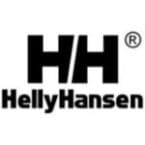The Bureau of Meteorology has confirmed early predictions of fresh northerly winds over the first two days of the Rolex Sydney Hobart 2008, ensuring the sailors a fast, thoroughly enjoyable ride to Tasmania.
At the traditional Christmas Eve skipper’s briefing Michael Logan, the BOM’s manager, Severe Weather Services, told the competing skippers they can expect to start in a 15 knot north easterly breeze, which will freshen to 20 to 25 knots during the afternoon as they speed down the New South Wales coast under spinnaker.
The fresh northerlies are forecast to hold throughout Saturday and into much of Sunday off the NSW coast, though a soft change on Saturday could see the lead boats encounter lighter winds in Bass Strait.
By Sunday night a major front will move through Bass Strait, producing strong, and possibly gale force westerly winds before they shift to towards the south on Monday.
It will be a tougher race for the smaller boats than the fast frontrunners, which are due into Hobart before Sunday night’s big blow.
“This is my fifth Hobart and this looks like one of the best forecasts I’ve seen,” said Andy Beadsworth, tactician on the week old Reichel/Pugh 63 Loki, one of the handicap favorites.
“The forecast certainly looks friendly for Loki. She was fresh out of the wrapper a few weeks ago so a slightly softer downwind forecast is definitely welcome. We don’t want to break the boat on its very first outing but we also want to push the boat hard and see what it will do.”
The forecast also looks tailor made for Ray Roberts’ Cookson 50 Quantum Racing, which looks increasingly like the yacht to beat for the Tattersall’s Cup.
“It’s a particularly good forecast for us,” Roberts said today, “Quantum Racing has a canting keel and as long as we have over 15 knots of breeze we can get her up and planing very quickly.”
In the dash for line honours there seems little in the forecast to dampen spirits aboard the 98 foot maxi Wild Oats XI, already a Rolex Sydney Hobart legend for her three consecutive first across.
The biggest threat to her taking out a record four-in-a-row is gear failure rather than her race rivals, and there are no back-breaking bashes to windward or overly strong winds to threaten her in the forecast.
She will be well and truly in Constitution Dock before Sunday night’s big change. Yet skipper Mark Richards shows no sign of overconfidence.
“You’ve got some fairly fresh running conditions and especially at night things can go wrong. You can blow a chute or muck up a sail change. Everyone will be going quite quickly and if you loose a guy over the side at night doing 25 knots of boat speed you’ll not find him for quite some time.
“It’s not going to be an easy race.”
If there is a fly in Wild Oats XI’s ointment it could be the soft weather change forecast for Saturday, which will produce lighter winds in Bass Strait while further back up the track the New South Wales south coast will still see fresh northerlies.
“I think Skandia and ourselves will have the same problem,” Richards says. “There is a chance of us going down the coast in really good breeze and then hitting a light patch and the boats behind us doing two and three times our speed.”
It’s variables like that which make Richards wary of predicting a race record.
“You could get to Tasman Light in 24 hours and to get from there to the finish line (across the notoriously fickle Storm Bay and up the Derwent River) could take 12 hours. We just don’t know,” he says.
For every yacht the challenges posed by this forecast are the same.
“Sailing through the night with big spinnakers is hard sailing,” says Ray Roberts.
“Visibility is quite difficult so you have to have a helmsman who can sail by feel. You’re going to get some big waves. You’re steering down a big wave in the middle of the night and often hitting the next wave because of the speed you’re travelling so typically you get a lot of water over the boat and that starts to wash the crew around.
“You have to be consistent over the whole period of the race. It’s very easy to burn out early because everyone is very pumped up at the start. You’ve got to manage the energy levels – when it’s easier going you must rest your crew – so they’re fit and ready when the conditions get hard.
“It’s a very energy sapping environment so keeping fit over the two or three days is critical. It’s not being good at the start or at the end but being consistent throughout the race.”
Roberts also argues that while maintaining optimum boat speed this year will be vital, the currents, and the likelihood of some very light patches of breeze off the Tasmanian coast in the later stages of the race will make it a very tactical contest as well.
“It appears to be just a straight line race from Sydney to Tasmania but you’ve got variable weather conditions and very complex current systems travelling in big circular motions.
“You have to be in the right place for the front, and you’ve got to get yourself in the favorable current that can be running two to three knots north to south. If you don’t get that right you could find yourself pushing against it.”
One thing is for sure. Win or lose it is going to be great sailing this year, and no-one is going to arrive in Hobart wondering. “We’ll be pushing Loki hard, trying to find the edge,” Andy Beadsworth declares. “Whether it’s the crew we find the edge of first, or the boat remains to be seen.”
This being the 10th anniversary of the stormswept 1998 Sydney Hobart, safety is at the forefront of everyone’s mind.
“1998 was the race that changed ocean racing forever,” CYCA Commodore and skipper of Ichi Ban, Matt Allen said before today’s briefing commenced, as he led the competitors in a minute’s silence in memory of those who have died during and on the way to or from the race since 1945.
By Jim Gale/Rolex Sydney Hobart media centre.



























